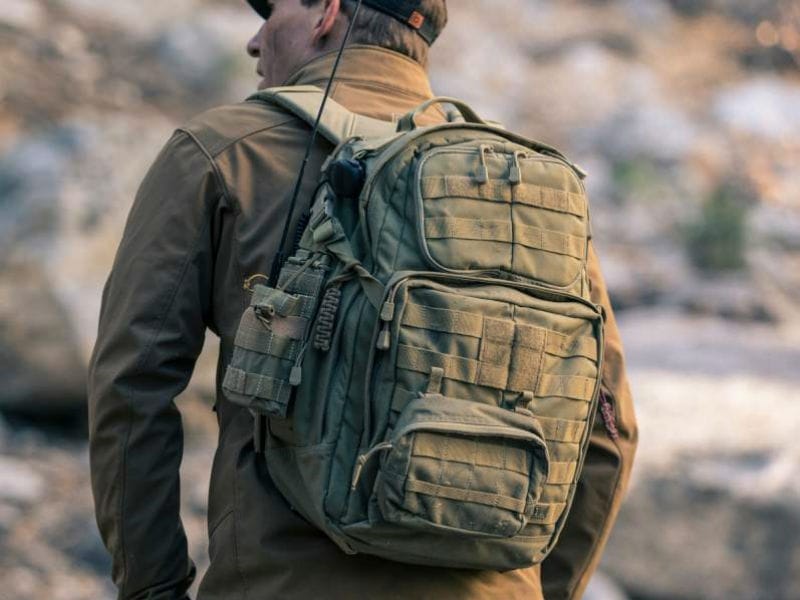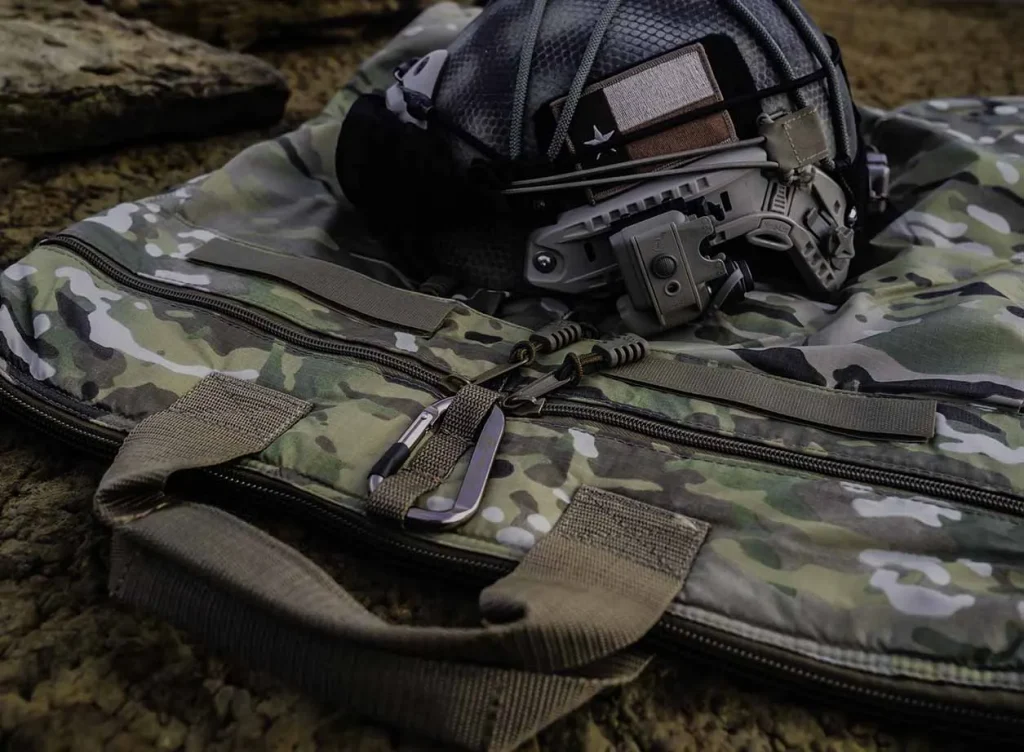If you’re taking part in demanding outdoor activities, it’s crucial to get the correct backpack. Your bag should be the right size to fit all of your belongings – not too huge, nor too small. It should be comfy, long-lasting, and useful, allowing you to keep your essentials conveniently. Finding the ideal backpack can be difficult without the right assistance because there are so many features, designs, and sizes to select from. I’ve put together a comprehensive guide to help you sort through all of your options and pick the ideal tactical backpack.
What Is a Tactical Backpack?

To comprehend what makes a backpack tactical, it is necessary to clear up what the term means. Tactical backpacks are designed for military-style usefulness. Hydration pack compatibility, MOLLE webbing (Modular Lightweight Load-carrying Equipment), and ammo pockets are all characteristics that originated in the military.
All of these features are meant to give you an advantage in combat. And with colours like coyote brown, olive drab, and camouflage patterns, they’re also designed to look militaristic. These colours, like military uniform styles, are meant to aid in unit concealment in a variety of situations, for instance when bird watching or hunting.
Because of their simplicity of use and durable design, buying a tactical backpack is increasingly popular. Such a backpack will withstand whatever you throw at it, unlike a regular bookbag, which may come apart after a few years of use. A conventional backpack may have enough compartments for your everyday commute, but a tactical one will give you more space, allowing you to run more errands, carry more gear, and increase your personal range.
Storage Capacity

Your tactical pack’s storage capacity is critical for the type of activity you want to be able to complete. Obviously, the size of your bag must correspond to the purpose for which it will be used.
That said, if you’re going on a multi-day backpacking trip in the woods, you’ll need a bag with a lot of capacity. In these cases, a bag with a capacity of 35-40 litres would be appropriate because it will be able to contain a large number of things.
If you’re going on a day hike, you won’t need as much space, so something like a daypack is a good option. Daypacks are generally 20-litre bags that can hold the bare essentials in a smaller space. As such, they are perfect for easy and short trips.
It’s worth noting, though, that getting a backpack that’s on the larger side is definitely a smart idea, as you don’t want to end up with a bag that’s too tiny and have to leave some crucial items behind that you otherwise would have taken. Because of the way these bags are built, it doesn’t matter if they’re underfilled because you’ll still be able to have a very small bag. Because of the compression straps on these bags, this is the case. Even if the bag isn’t full, they’ll make sure there’s little movement.
On the other hand, if you want a large backpack but are concerned about running out of space, a backpack with a MOLLE system allows you to attach various items to the back of your bag even when it is fully loaded.
Material

The material that these backpacks are made of, as previously said, must be extremely sturdy and thick. In that manner, it will be resistant to abrasions and tears, as well as able to support all of the weight that will be carried in the backpack.
On the other hand, the material’s thickness is measured in denier. Because the differences in a unit like millimetres are too small to see, it is a unit of measurement that is employed for thickness. The denier rating for conventional backpacks is typically approximately 250, which is adequate for most applications but falls short of the tactical bag criteria. You can expect a rating of above 500 for these backpacks, with the majority of them exceeding 600.
Tactical bags are usually made of nylon, polyester, or Oxford cloth – all fantastic materials since they can be made highly sturdy while also being light in weight, ensuring that you get a high-quality product with a long lifespan. They’re also fabrics that can be treated with a water-resistant coating, which is vital for keeping your contents dry. Some materials can be made waterproof, however, this just means that water cannot get through them, not that the bag as a whole is.
Another feature to pay attention to is the zippers and buckles. If they are weak, you will become frustrated quickly if you are unable to secure or tighten the bag. Because the zipper can be a weak area in low-cost backpacks, you’ll want heavy-duty zips that can withstand a lot of abuse.
Compartments and Pockets

The number of compartments in these backpacks is one of their main distinguishing features. The basic way these bags are organised is into two huge compartments in the centre, with several other pockets on the front and potentially the sides as well. This gives you a lot of freedom in terms of where you may put your items to keep them safe and secure. However, depending on how you normally pack away stuff, this is often a personal choice.
If you prefer to stuff your bag without thinking about it, you’ll probably want fewer compartments. However, if you’re more meticulous about filling your backpack, numerous compartments will make it much easier to keep all of your belongings.
A fleece-lined pocket is one of the bags’ best features. Because the material of these backpacks is tough and sturdy, having a pocket like this is really beneficial. This is perfect for delicate and scratch-prone things like glasses and electronics.
Another practical feature that a tactical bag should offer is hydration pack storage. You wouldn’t have to bring any water bottles on your trip this way. Some backpacks just have a designated place for a hydration pack, while others contain the bladder.
If a backpack has a MOLLE system, it provides a tremendous level of adjustability. This is a set of closed loops that allow you to attach items such as a torch to the back of the bag. This can assist in increasing the usability of your back.
